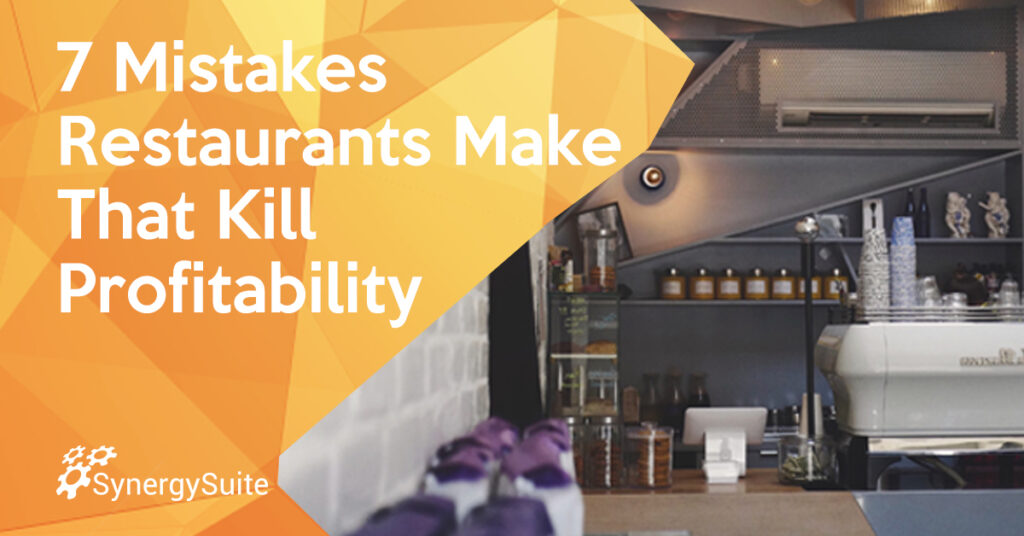Running a restaurant can be the best and worst thing you do. Being the hub of your community, meeting new people, creating experiences that people cherish—all of that’s why we go to work every day. But to enjoy the best parts, it’s important to keep up with key responsibilities that drive the success of your restaurant.
So how do you avoid becoming a restaurant failure statistic? Avoid these seven mistakes.
1. Not Monitoring Suppliers
Your suppliers are one of your most important relationships in the restaurant business, and it’s important that you treat it that way. If you don’t take the time to meet regularly with your suppliers, you won’t find out when there are new products that may be better for you, or get help from your suppliers with optimizing your orders.
You should also verify orders and deliveries. Mistakes happen, even with the best suppliers, and you should double check to ensure you’re getting the amounts and prices you ordered. One SynergySuite customer saved $30,000 a year after discovering an ongoing mistake with their deliveries that had driven up food costs.
2. Making a Mess of Inventory
No one loves taking inventory, but it’s a must-do for a reason. First off, if you’re not even taking inventory, start now! But what’s more likely is that you’ve just let inventory become disorganized and based on eyeballing shelves.
While pen-and-paper inventory is better than nothing, restaurants who really want to get food costs under control are turning to inventory software. It gives employees a consistent template to follow, and aggregates all the information in one place. Plus, if you get one that includes or integrates with purchasing, you can automate and optimize inventory levels.
3. Making Decisions Off Bad Data
You can be the most thoughtful decision maker in the world, but if you’re basing decisions on bad data, you’re still making bad decisions. So stop collecting bad data. Stop the process where data has to be entered three time—first on paper, then into a spreadsheet, then into a second spreadsheet. Put together dashboards that automatically pull data, so you introduce fewer errors when duplicating data entry.
4. Relying on On-the-Job Training
It’s tempting to have your best server or best manager be the one who trains all future servers and managers. But this is only setting yourself up for failure. What if that person gets sick? What if they leave unexpectedly? Or maybe they just don’t have time to be everywhere you need them to be.
Don’t get me wrong, on-the-job training should be a part of the mix. Just don’t forget to add other things into the mix. Document what your superstars are doing and turn it into manuals, videos, texts or other types of training materials.
5. Ignoring Advances in Restaurant Technology
Making changes is painful, but so is working with outdated restaurant tech. If your software isn’t cloud-based, if you’re trying to integrate 6 separate systems, if you’re not on mobile—it might be time to look at what modern restaurant technology looks like. The advances in POS systems, restaurant management software and accounting solutions has made huge strides in recent years; don’t miss out on the things you could gain from these advancements.
6. Not Interacting with Customers Online
Treating people well when they’re in your location is obviously important, but if that’s the only time you’re talking to customers, you’re missing out. You need to respond to online reviews—positive and negative. You need to showcase your space, your food and your ambiance on social media. Help people who have never been to your location get a feel for it, and remind those who’ve been there why they loved it.
7. Neglecting Cost of Goods Sold
It’s so easy to not figure out or continue to monitor COGS numbers, but that’s a big mistake to not try. You may remain profitable, but you won’t know why or if there’s anything you could do to improve it. Keep an eye on your COGS, and track how that changes over time. You should do this at least monthly, but ideally weekly.





